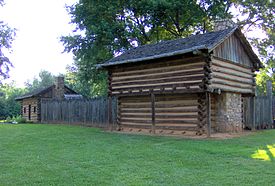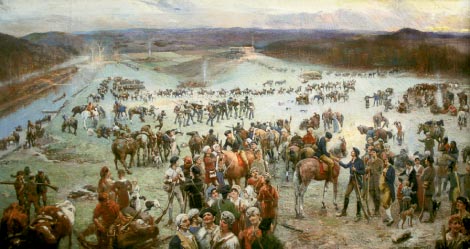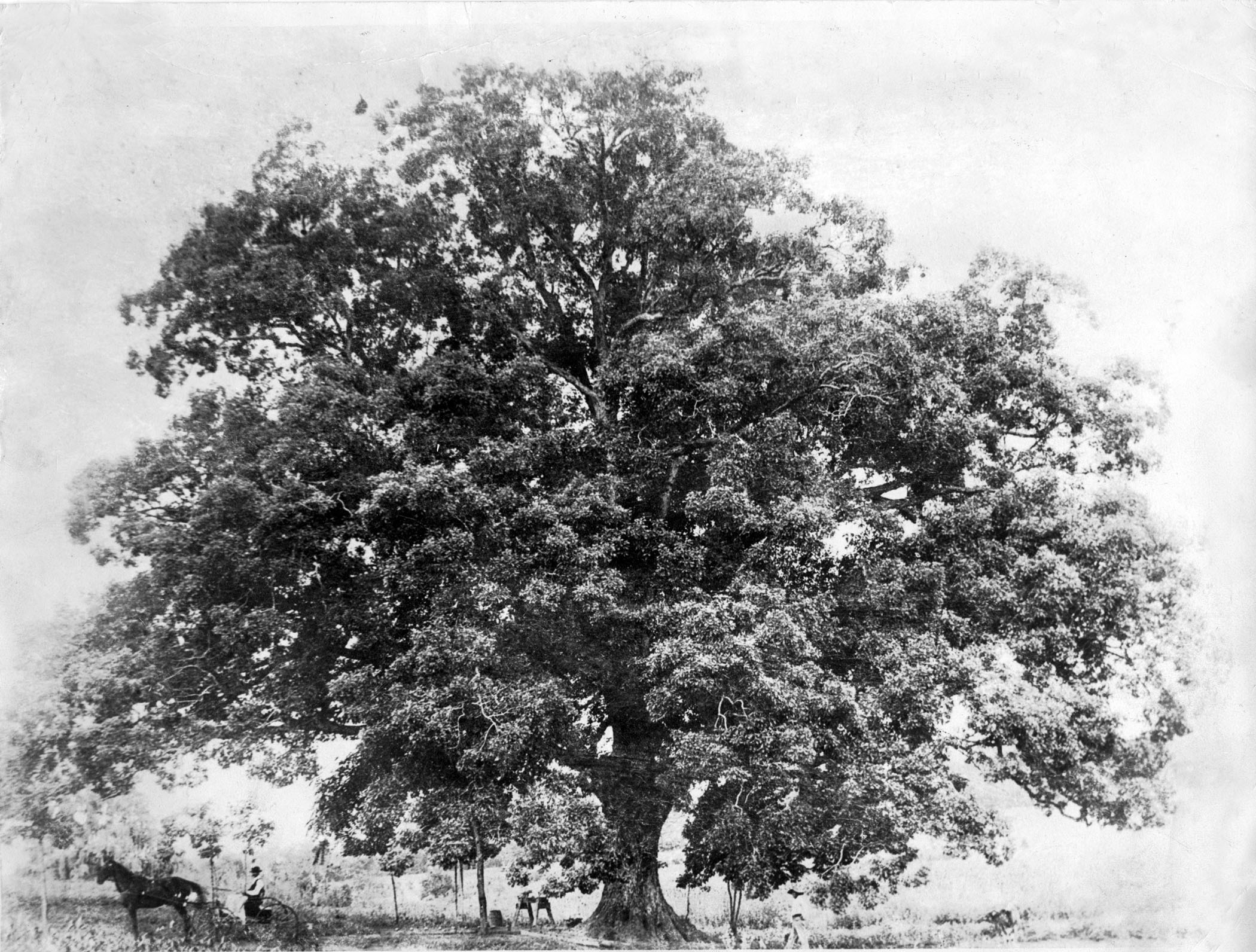Moravian Towns
13Oct1780, the victorious Kings Mountain Expedition split up from Quaker Meadows in Burke County. John Sevier and some of his volunteers started west back home. Some of the South Carolina troops under Edward Lacey headed south. Some of the wounded stayed with soldier escort/guard/corpsman friends at patriot homes in Burke County. Most of the patriots headed north toward Colonel Cleveland’s area taking their prisoners to the Moravian Towns.
On the way north, Col Campbell met some more Virginians who were coming to help him catch Patrick Ferguson. Major Joseph Cloyd’s militia men had a battle with Tories at Shallow Ford. A few of his men went on, but were too late for BKM.
Bethabara was the principal town among the Wachovia Tract settlements where the prisoners would be detained. According to Lyman Copeland Draper, the patriot colonels met at Bethabara to write their official report to the governors and generals on 24Sep1780. Known to have had breakfast at the Old Salem tavern, it is another possible site where they described the Kings Mountain encounter.
Colonels Campbell, Cleveland, and Shelby were still together with the troops and could report to their governors and the generals. The other colonels had gone their separate ways. Without a thought that their hasty reports of casualties would become newspaper articles, the observations for statistical analysis, and the details for bronze monuments, they described a total victory over the enemy then looked forward to unfinished business like Cowpens, Guilford Courthouse and Yorktown.
Wachovia Tract
Old Salem Tavern
In 1751 the Moravian Church of Europe obtained a 100,000 acre tract of wilderness they called “Wachovia” (present day Winston-Salem, Forsyth County, NC). The Moravians who began to settle on this church owned land came from Pennsylvania and predominately spoke their native German language. Moravian’s have always sought to resolve conflicts peacefully rather than bear arms.
Shortly after the French & Indian Wars (1756-1763) began the Moravians decided to defend their community from Indian attacks by fortifying their community of Bethabara with a stockade fence that settlers from the surrounding countryside would also seek safe refuge. This fortification was then known as “The Dutch fort”.
At the onset of the Revolution the Moravian settlements had grown into 3 towns: Bethabara (old town); Bethania (new town); and Salem. In 1778 its men began to be drafted to serve in the Surry County Militia. Instead its men would choose to pay for a substitute. As a result the Moravian communities would experience hostilities from both sides of the conflict. Due to the fact that its citizens would not defend themselves with firearms they faced widespread lawlessness and frequent theft during the war from marauding gangs of both Tories and Patriots. Eventually it got so bad that in January 1779 leaders from these peaceful communities sought “police protection” from the State of North Carolina, which was granted after its men took affirmation of allegiance and fidelity to the State and the United States.
The Moravian Town (Salem) and Moravian Towns (the area around Salem) are often mentioned in accounts of revolutionary activities. Bethabara was the Moravian town where most of the prisoners were taken after BKM. Whereas, Bethania (Hausertown aka Howsertown) housed some returning patriots. The Kings Mountain battle report was probably written at the (Old) Salem Tavern.
Salem, now downtown Winston Salem, is about ten miles east of the strategic Shallow Ford of the Yadkin River, a well known natural feature that afforded safe crossing of this major waterway. The Great Wagon Road crossed the Yadkin River at this location on its route from Pennsylvania to Georgia.
On February 9, 1781, British General Cornwallis during his (failed) attempt to catch the American Army led by General Nathanael Greene during the famous “Race to the Dan” crossed the Shallow Ford and his entire army occupied and plundered the Moravian Towns.








